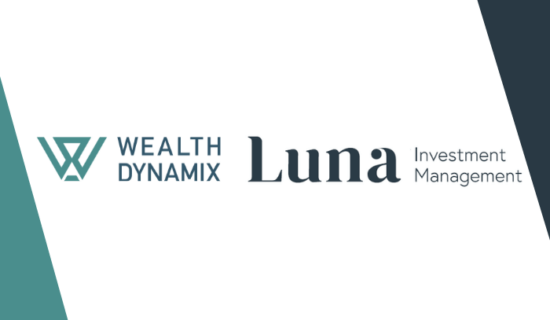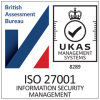Comment aider les conseiller en gestion de patrimoine pour être plus efficace et pertinent dans la relation client
Guest blog by Philippe Poirot, Head of Strategy Marketing and Offerings, Microsoft Financial Industry Services
(English translation is included below)
Tout comme Microsoft, de nombreuses sociétés de gestion de patrimoine sont passionnées par la digitalisation et l’automatisation. Pour elles, il s’agit de renforcer la performance des employés, l’engagement des clients et l’efficience des processus. Atteindre l’excellence sur ces 3 piliers est un objectif prioritaire pour développer l’activité commerciale et augmenter les revenus.
Concrètement, le digital est un asset pour transformer l’activité et la relation client. La digitalisation permet par exemple, l’élimination des tâches administratives manuelles afin de dégager du temps réalloué à la relation client et ainsi générateur de revenus. Des gains très importants peuvent être réalisés grâce à la suppression des tâches routinières et répétitives qui affligent les gestionnaires de relation client depuis de nombreuses années. Grâce au digital, de nombreux gestionnaires de patrimoine peuvent bénéficier rapidement et facilement de l’usage de l’IA pour les aider à traiter des données clients en grande nombre afin de faire des recommandations pertinentes à leur client en temps réel. Ce type de solutions et d’analyse à l’échelle révèle des solutions opérationnelles qui renforceront la relation conseiller-client d’une manière qui n’est tout simplement pas envisageablement autrement.
Souvent lorsque l’on pose cette question à un CEO en charge du Wealth Management : “Quel est le plus grand problème pour les gestionnaires de relation client ? » la plupart sont susceptibles de répondre “Ne pas donner la bonne information au client au bon moment. »
Si on pose la même question à une salle constituée de gestionnaires de relations, la réponse la plus fréquente est : “Nous n’avons pas les données pour savoir quelle est la bonne chose à dire aux clients, au bon moment. »
Ainsi, la clé pour engager les clients d’une manière plus pertinente et captivante réside dans la capacité des entreprises de Wealth Management à extraire la valeur des données qu’elles détiennent sur leurs clients. Aujourd’hui, le nombre, la pertinence et la qualité des données clients ne manquent pas en raison notamment de la grande quantité capturée lors de l’on-boarding et des données captées tout au long de la relation client.
La difficulté est que les systèmes de collecte de données des clients sont nombreux et divers et ne remontent pas toutes celles-ci au niveau du système d’information de l’entreprise. La multitude des systèmes entraine des manques de cohérence qui ont un impact direct sur la satisfaction client. Le client se trouve souvent à fournir toujours les mêmes informations. Par ailleurs, l’intégralité de ces données collectées, ne sont pas exploitées en interne pour enrichir la relation client, du fait de l’hétérogénéité des systèmes utilisés.
La plupart des grandes institutions financières ont un avantage car elles détiennent une mine de données sur les clients et ceci sur de nombreuses années, qu’elles soient structurées ou non structurées. Comment peut-on donc tirer le meilleur parti des données clients. Il existe pour les banques privées, 3 règles d’or pour choisir sa bonne solution d’Intelligent Client Life Cycle Management :
- Capturez les données une seule fois, d’une manière entièrement conforme, et les réutiliser à chaque étape du cycle de vie de la relation client. Cette solution permet d’éliminer les doublons et les demandes similaires faites au client. Elle contribue à préremplir les formulaires avec les données clients déjà fournies pour réduire l’impact administratif de la relation et personnaliser l’expérience client.
- Veiller à ce que les données puissent être organisées, consultées, agrégées et analysées afin de fournir aux gestionnaires de la relation client une connaissance précise des besoins de leurs client et une vision 360° de la relation.
- Tirer parti de l’IA pour fournir aux gestionnaires de la relation une analyse en temps réel des meilleures recommandations à fournir au client qui correspondent à ses objectifs personnels et ses demandes en matière d’investissement. L’ IA peut aussi être utilisé pour analyser les retours et sentiments clients suite aux échanges afin d’enrichir les modèles de recommandation.
Ces règles sont difficiles (voire impossibles) à appliquer dans les organisations qui n’ont pas de vision holistique de leurs données et du cycle de vie de la relation. Pour atteindre cette vision intégrée de la relation, il s’agit de posséder une vision globale du cycle de vie des clients : suivi de la prospection, on-boarding, développement de la relation en passant par la gestion de la maturité de la relation client avec l’élargissement de la surface financière gérée en termes de solutions jusqu’au réengagement des clients. Une approche axée sur la technologie et une perspective de bout en bout de la relation sont essentielles pour orchestrer toutes les phases du cycle de vie du client et en assurer le succès, tout en contribuant à décloisonner les fonctionnements internes de la Banque.
Dans un contexte de vieillissement du fonds de commerce de la clientèle de wealth management et de la baisse de la rentabilité, il est nécessaire d’agir rapidement. C’est un enjeu majeur que de passer d’une approche cloisonner de la relation pilotée avec des système éparses avec une gestion intégrée de la relation client. Il s’agit de s’appuyer sur l’unicité des données intégré dans une système de Life Cycle Management, enrichi par l’IA pour aider le conseiller de clientèle à agir au plus près des besoins clients.
English translation:
How to equip relationship managers to know the right thing to say, at the right time
Much like Microsoft, many wealth management firms are passionate about empowering employees, engaging clients, and increasing process efficiency. Achieving excellence in these three pillars must be your goal if you are on a mission to drive down cost-income ratios, and grow revenues.
A significant factor in empowering relationship managers is the elimination of manual administrative tasks wherever possible, freeing time for more client-facing, revenue-generating work. Digital transformation is helping to achieve this goal for routine and repetitive tasks that have plagued relationship managers for many years. However, many wealth managers still have a long way to go to fully embrace new technologies like Artificial Intelligence (AI), which has much to offer in terms of capturing, processing, and analysing vast quantities of data at high speed. This kind of automation and analysis at scale reveals actionable insights that will strengthen the advisor-client relationship in ways that are simply not possible otherwise.
If a roomful of banking CEOs were asked “What is the biggest problem for relationship managers?” most are likely to reply “Not saying the right thing to the client at the right time.”
Ask the same question of a roomful of relationship managers, and the typical answer would be “We don’t have the data to know what is the right thing to say to clients, at the right time.”
So, the key to engaging clients in a more intelligent and captivating way lies in your ability to extract value from the data you hold. Today, there is no shortage of high-quality data due to the vast quantity that is captured during onboarding. Sadly, however, once this rich data has met the identity verification requirements of compliance, it is often left to languish in systems that are unconnected to the rest of the business, and its true value is lost. In theory, large financial institutions have an advantage as they hold a wealth of client data spanning many years. However, they often find aggregation and analysis more challenging, as the combination of structured and unstructured data they hold resides in multiple, disparate systems.
As clients travel further on their journey with your firm they are often asked multiple times for the same data, simply because the data dots cannot be connected and company-wide visibility is not possible. Apart from the obvious inconvenience to clients, duplicate data is being stored in many different parts of your organisation, unnecessarily.
When dealing with data there are 3 rules that successful wealth managers live by:
- Capture data once, in a fully compliant way, and re-use it at every stage of the client lifecycle to eliminate duplication, pre-populate forms to reduce administration, and personalise the client experience.
- Ensure that data can be organised, accessed, aggregated and analysed to provide relationship managers with accurate insights into clients’ needs and preferences.
- Leverage AI to provide relationship managers with real-time analysis, and the intelligence to judge the sentiments of their clients and deliver timely next-best recommendations that match their investment goals and aspirations.
These rules are difficult (if not impossible) to apply in organisations that lack a holistic outlook and global vision. Still now, we see firms that view the various stages of the client lifecycle—from prospecting and onboarding through to client management, servicing, and re-engagement—as separate business functions that are unconnected and siloed. A technology-driven approach and end-to-end perspective is essential to orchestrate all phases of the client lifecycle and ensure success moving forward.
The gap between wealth management leaders and laggards is increasing over time. Firms that are failing to automate business-critical processes and empower relationship managers with data-driven insights presented in context, and in a form that they can easily interpret and act upon to engage clients, will find it harder to contain cost-income ratios and grow revenues in the future.
READ OUR INSIGHTS
17 April 2024
Achieving profitability at scale: the potential for AI
We delve into the use of AI technology in wealth management. Far from belonging to a far-distant future, it is here and growing more intelligent by the day.
5 min. read
2 April 2024
Empowering client-facing relationship managers and advisors: Perspectives from Wealth Dynamix’s APAC head
Hubbis recently hosted a digital dialogue focusing on the application of the latest digital solutions for the Relationship Managers and advisory in the world of Asian wealth management, as technology revolutionises the offerings and efficiencies across the broad wealth management community in the region.
5 min. read
19 March 2024
Navigating the challenges of scaling through technology
Avoid buyer’s remorse with an upfront analysis of the challenges of modernising your technology stack for greater scalability. Join us as we unpack the issues and give you some pointers.
5 min. read






